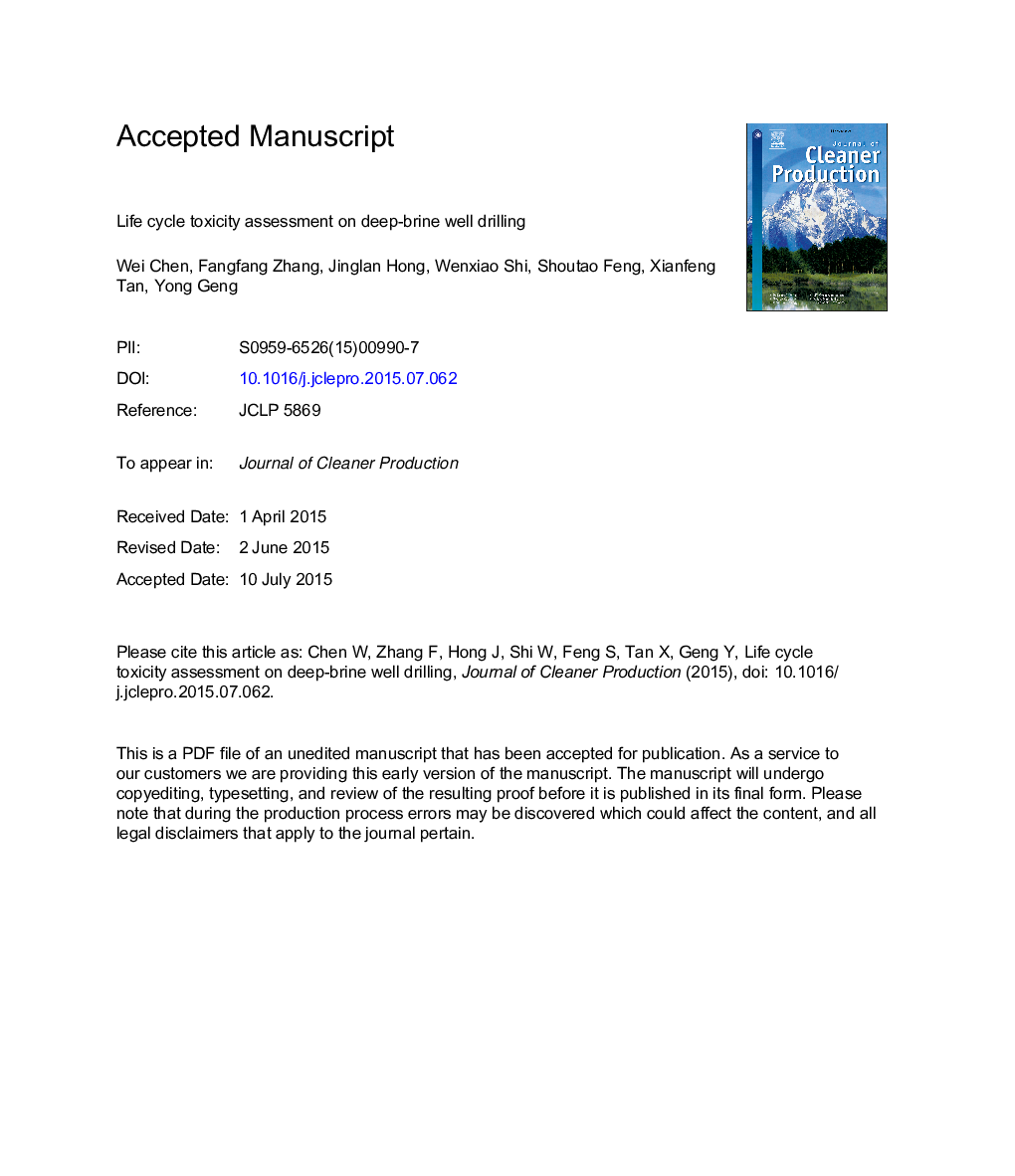| Article ID | Journal | Published Year | Pages | File Type |
|---|---|---|---|---|
| 10688040 | Journal of Cleaner Production | 2016 | 39 Pages |
Abstract
The features of a life cycle toxicity assessment (LCTA) model include regionalization, uncertainties, and geographical variability. This study provides a simplified and regionalized LCTA to improve the evaluation of regional toxicity impact based on a case study of deep-brine well drilling in China. Uncertainty analysis was conducted using Taylor series expansions. The proposed LCTA can efficiently quantify the toxicity impact and identify its key contributing factors. Results show that the key factors contributing to the toxicity impact of deep-brine well drilling are steel, electricity, and direct pollutant emissions generated from fluid loss and waste (i.e., waste drilling fluid and drilling cuttings) disposal during drilling. The most significant substances are mercury and arsenic to water, copper and barium to soil, and vanadium to air. Selecting a drilling fluid with low heavy metals, decreasing the consumption of energy and raw materials, reducing the drilling fluid loss, and optimizing the waste disposal are effective approaches to reduce the overall toxicity impact of deep-brine well drilling.
Keywords
Related Topics
Physical Sciences and Engineering
Energy
Renewable Energy, Sustainability and the Environment
Authors
Wei Chen, Fangfang Zhang, Jinglan Hong, Wenxiao Shi, Shoutao Feng, Xianfeng Tan, Yong Geng,
